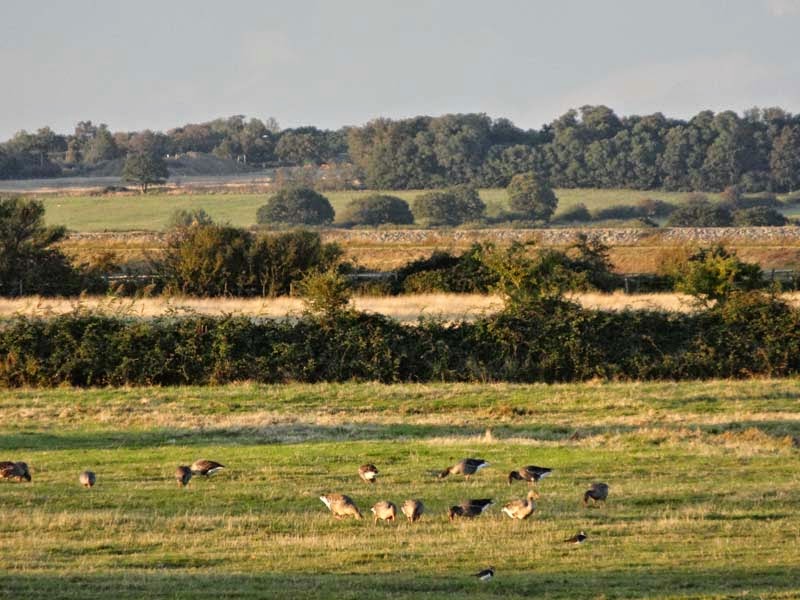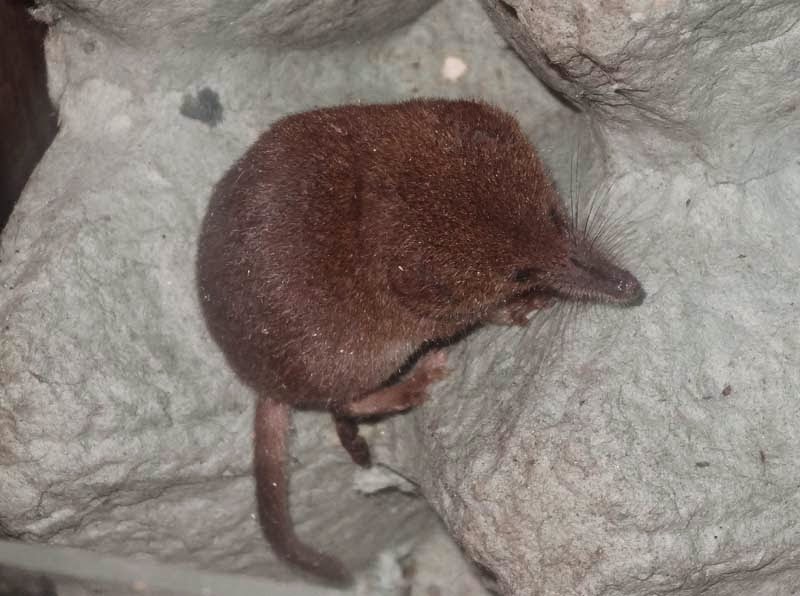Birds noted from the Hard included 200 black-tailed godwits standing on a mudbank as the tide came in. Another 200 black-tailed godwits were also noted close to the Dabchicks sailing club. A common tern was hawking amongst the moorings while 100+ turnstones were counted resting on boats near the jetty.
A rock pipit flew over St Peters Marsh calling in the afternoon.
Some of the 200+ black-tailed godwits seen in the Strood Channel on Saturday morning near the Dabchicks. Mark Dixon commented on the large number seen here recently, counting 400 godwits feeding here a few days previously.
Jane Dixon also saw the great white egret by Cobmarsh Island the previous weekend on the 21st.
Mark was also pleased to see a red squirrel run across his garden by the Dabchicks a fortnight previously.
During a brief show of the sun on Saturday afternoon this small tortoiseshell was on the wing on St Peters Meadow, West Mersea. A small white was also seen briefly in flight.
Basking on a heap of dead grass were a couple of common lizards, seen just a few metres from the end of the St Peters Meadow boardwalk.
A sparrowhawk was seen in hot, but failed pursuit of a meadow pipit over Firs Chase on Saturday afternoon.
There was the unexpected call of a tawny owl late on Sunday night calling in the Lane and Firs Chase area. One was also heard by Martin Cock very late on Sunday 28th in the Coverts/ Broomhills area. These are the first callngs heard in these two areas for over ten or fifteen years.
The pied blackbird made an appearance again after an absence of several months in the Firs Chase garden on Monday 29th.
The tide was low during the mid morning walk along the Strood Channel on Saturday 27th. Along the mud were a kingfisher in flight that landed by the sluice outflow, 120 wigeon, 100 teal, 500 golden plover, 5 greenshank, and one knot. Seven little grebes and eight little egrets were seen along the Channel.
A male stonechat was perched on a bramble bush in the dyke, two reed warblers, 4 reed buntings, 10 skylarks, 100 linnets and 10 meadow pipits were some of the small birds noted. There was no sign of the wheatear that was seen by the seawall on Friday 26th.
A sparrowhawk flew across the Channel towards the trees on Ray Island while a male kestrel seemed to be seeing off the island a female/ youngster across the Strood Channel.
A swallow was still flying around the Dabchicks apparently the family has only just fledged chicks in the last few days.
The common marbled carpet is a widespread moth and occurs in small numbers each year.
Other moths of interest from the 15 species noted included spruce carpet, red-green carpet and L-album wainscot.






















































